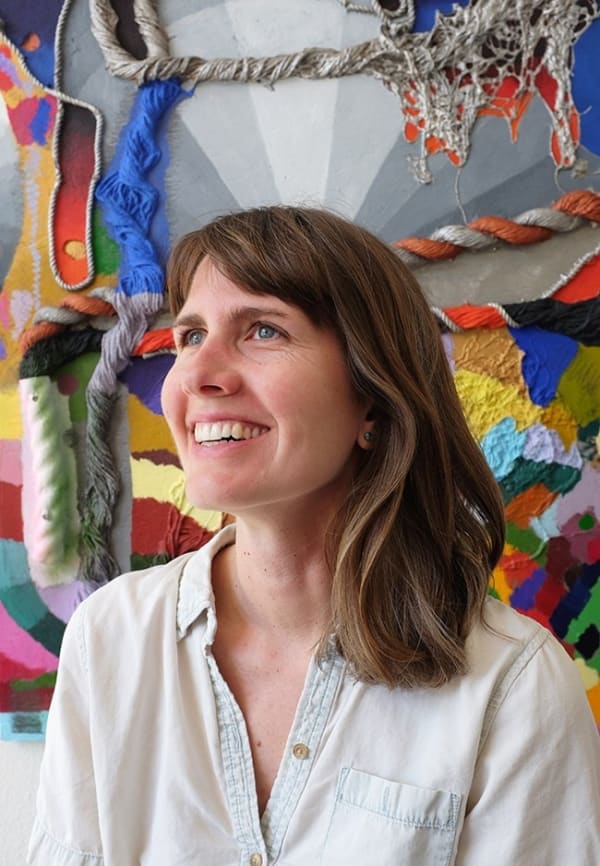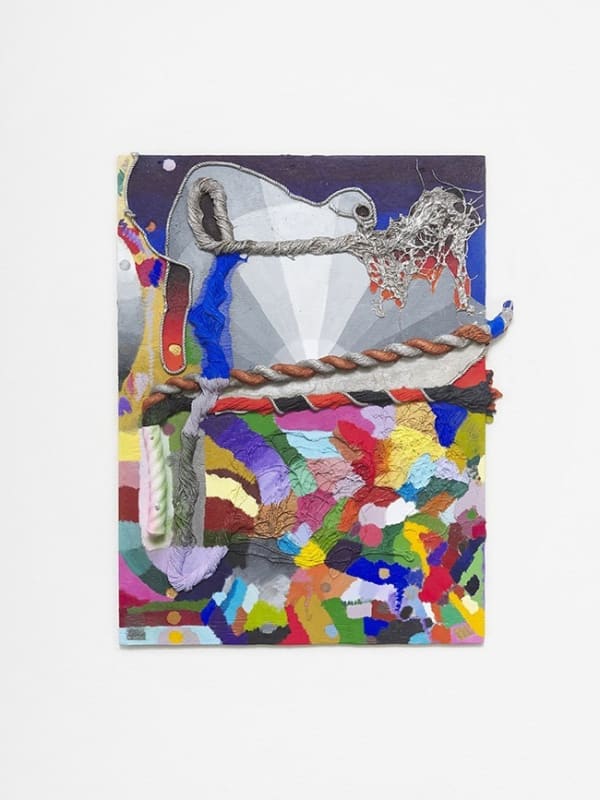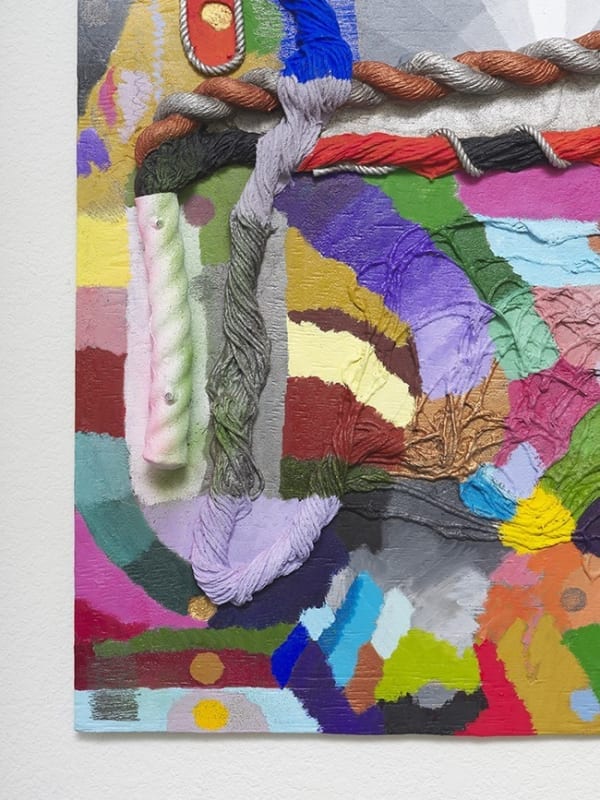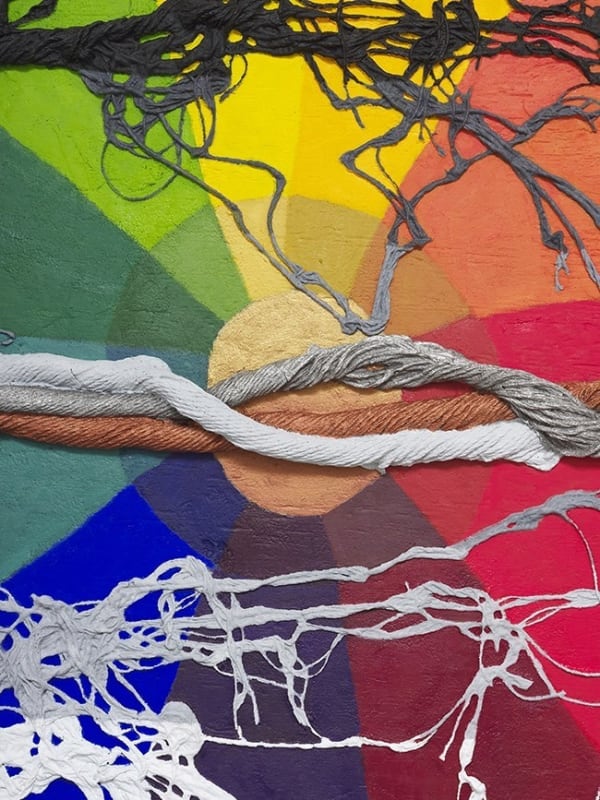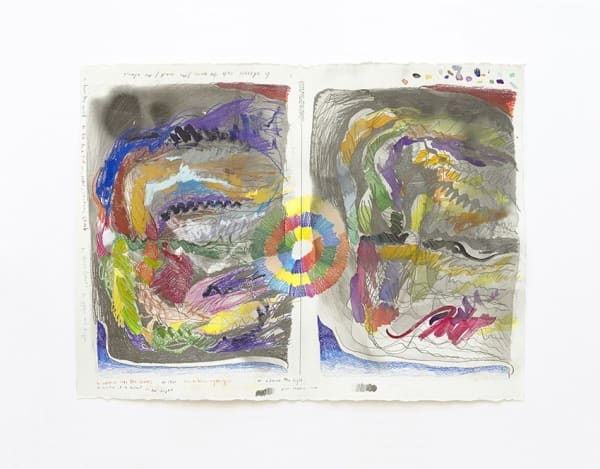In the coming weeks, Carla founder and editor-in-chief Lindsay Preston Zappas will be hosting chats with members of the L.A. art community via Instagram Live on Fridays.
The following was edited for web from an Instagram Live conversation on May 8, 2020 at 5:30 PST.
In the coming weeks, Carla founder and editor-in-chief Lindsay Preston Zappas will be hosting chats with members of the L.A. art community via Instagram Live on Fridays. The following was edited for web from an Instagram Live conversation on May 8, 2020 at 5:30 PST.
Lindsay Preston Zappas: So how have you been? How have the last couple of months shaken out for you as far as mental/studio balance?
Katy Cowan: It changes. It was really weird, and it still is really weird, but then it was trying to figure out how to make work. and also for me, I teach, so How to teach online, and I don't know it's been an interesting result.
LPZ: At this point, two months into this, I personally feel that I'm settling in a little bit. I'm feeling calmer. I feel less frantic. How do you feel?
KC: Yeah, same. Especially living in California where [shelter-in-place] happened pretty quickly, I feel like there were tons of emotions but it happened really fast, like panic and worry and confusion and everything and then it was like, all right now how do we just go forth?
LPZ: And for you it kind of bumped up with some deadlines right, because you made this new body of work for Frieze? What was it like to kind of have to shift into the studio during that panic mode?
KC: It was interesting because the way that I make work is [to] have everything produced in metal first and then I work into it [painting and drawing] on top of the metal. I just got in this body of work back from the foundry right before the quarantine happened and then I obviously had way more time than normal to work on it. It was great to have this deadline, but now it's interesting because I finished this body of work and I'm kind of sad because I don't have other things to start working on immediately. But it's also like okay, now what do I do?
LPZ: Right, because of the foundry limitation you mean?
KC: Just the unknown of everything. Should I get stuff into the foundry right now? Logistical and financial questions…
LPZ: And if you're sending stuff to the foundry, you're obviously paying for that fabrication. So I could see how that could be a mental block of, "should I really be doing this right now?" I'm sure at this point you're kind of past that a little bit because that's your practice and that's the first step often.
KC: Yeah well, we'll see. I am kind of curious to investigate some other material. I've really been wanting to learn for a couple of years how to make sculptural paper pieces-like actually grind up paper and turn them into sculptural bodies. And that's a relatively inexpensive thing to do that takes a lot of time, so maybe something like that will happen.
LPZ: Interesting. And I feel like there's a lot of potential for molding paper, too. You could kind mold over your rope shapes. That could be really interesting.
KC: Yeah. Yeah, exactly.
LPZ: Let's talk about this body of work that's in Frieze right now. These works are stunning. To me, they seem a bit different-they seem so much more composed on a two-dimensional plane. Can you talk about the process? You said you shape the rope and then get it cast-were you always placing it within this picture plane as you were doing that planning process?
KC: Basically what happens is I compose and have to situate the ropes on some sort of board, just to stabilize them for the molding process at the foundry. I work with a really awesome foundry where they're willing to just kind of do whatever, which means they can cast stuff and cut it out really cleanly, but often I'll ask them to cast stuff and leave the kind of mess-ups, and spillover, and splashing, just for the sculptors out there.
For this series, I really wanted to just go back to the traditional, rectangle-painting proportion, which I hadn't done for a really long time. There were a few reasons-these were made for an art fair, and I wanted to see what it would be like to make a more traditional format for a fair, like how would they stand out in a booth?
I feel like I'm always just setting up these challenges in my studio for myself, which is like, as someone who used to paint in undergrad, can I go back to the canvas, which I've rejected so far? Can I do that? What will it be like for me to try to go back to that?
LPZ: It's interesting that you're talking about the canvas as moving backward, regressing to the canvas or something, but I think we all learn on a two-dimensional space.
KC: Totally-and I just mean that's how I started, so to me it feels like going back to this thing that I had rejected, but I know how scary and exciting a canvas is. So like, can I go back to it with a sculpture mentality as well? So these results could be more painterly, kind of like low-relief sculptures. Which was fun and really hard, and I'm actually really thankful that I had more time to work on them than I thought I would because of the quarantine… it resulted in much more elaborate, composed paintings than other pieces you've probably seen.
LPZ: Yeah, they feel so much denser to me and that's something I wanted to talk with you about. Some previous works are slightly more minimal feeling, or more having to do with space, and stretched out-ness, and weight, and things like that, and I'm curious if in the process of making these: do you feel that density is something that's shifted in this body of work?
KC: I think it's just that I focus on different things at different times. A lot of the things I end up focusing on just come from questions people ask me, which as of late has been like, "what's up with your color usage?" And I'm like, "well, I think I know what's up with my color usage, but maybe if I like really have to focus on it really hard, I can figure some things out that I'm maybe not paying attention to." They don't feel that divergent, even though I know visually, they totally are. It's just a different area of thinking that I wanted to investigate.
LPZ: I wanted to also talk about these [new] drawings because I think you even talk about the drawings as sketches, but these newer drawings feel so complete. Can you talk about that relationship and how you see the drawings fitting in?
KC: The drawings-and I think this might actually be kind of similar to how I think about the sculptures, is that they take on different roles. Some are actual sketches of what I'm trying to figure out, so they seem like the more one-to-one relationship. Some happen way before the process and they might look more like a painting or a watercolor, and then they enter a sculpture later on. Some are made afterward, a lot of the times they'll have my practical notes written on them or some segment of a book I'm reading, a line of poetry or something. I really try and have the drawings around as this different sort of thinking space that different modes of thinking kind of flow through.
LPZ: And there's something about paper that feels less precious, like you could just scribble a note, or scribble a quote from a book you're reading. But all of those thoughts become really precious too, because they're being composed on paper, so it kind of straddles this line of being a sketch, but it's almost a more intimate look at your practice or your process because it's showing us all of these thoughts along the way.
KC: Yeah, I think so. It's funny because I've always done them, and I can't remember when it happened, but someone, I think it was Philip, was at the studio from the gallery, and he was like, "I haven't seen these before." And I'm like, "oh yeah, this is just something I do"-you know? I just hadn't ever thought about them [that way]… that people might be interested in seeing that other layer of what's going on. But I love the drawings. And honestly, if I had to explain how I'm composing the ropes, I'm totally thinking of the ropes as a drawing tool. I'm ultimately just drawing with them.
LPZ: The ropes become almost the first brushstroke or the first line. I wanted to talk about your older work, where I feel like some of these moves are coming into the drawings too, where the rope becomes the first gesture, and then you're going in with paint and colored pencil, and kind of doing a similar move, where you're almost responding. Can you talk about that? Some of the moves just seem so playful, and a little more intuitive, like you're just responding as you go.
KC: I like that because there's a bunch of weird steps that happen. First, I have to compose these ropes, which are actually all CrossFit ropes-I have so many CrossFit ropes, it's really weird… there are different capacities that I have just with the physicality of the rope. Then I've got to take then to the foundry, get them cast, talk about how we should cast them. Then I get these big metal objects back, which is so beautiful and you don't really want to paint it. And then hang it up and go into the painting part of it. And the painting part shifts piece to piece.
In some of them, I get kind of romanced by the material almost, and I find myself drifting off and painting these really thin lines. Some are kind of bulky and showing the boringness of a rope, almost. Some of the ropes, just the way that I've composed them kind of section off spaces that I'll start creating or painting landscapes… Then in some of them, there are inconsistencies in the plywood, so it's a big response to the physical material, and I feel like I go into a drawing mentality where I'm getting lost in my line work, and sometimes it's a sculptural mentality where I'm trying to pull something out with the paint. It varies a lot.
LPZ: So thinking about a work like [(is, is; informal) Position, 2019] where there's still paint involved, but to me, it feels so much more like an object than a painting. Is that a similar process of applying paint on something like this [work], or are you talking more about the two-dimensional works?
KC: No, the same-in that one, I was like, "I kind of just want to paint this one white and leave it just like a rope." I just wanted it to be almost kind of blunt and boring as an object but realized I had to apply a little bit of color in there to show the three-dimensionality of it. Obviously it fades from a darker-there's just a little bit of dark blue spray paint-and then it fades to that pink on the bottom there. All within that rope is a ton of graphite where I'm pulling out all of the lines of the rope, so when you see it in person it really looks like a rope that just has some coloring on it. But again, it's just a simple, doodle-y kind of shape.
LPZ: When did you first use rope and what drew you to that material? And do you think you might ever move away from it, or do you feel like its one of those materials that it's like, "I need this in my work"?
KC: I think I started using it a few years ago. I go through these periods of different materials. I've gone through periods of using just wax and plywood and clay and sun-sensitive paint, but I also go through periods of focusing on just one tool, using just two-by-fours, or just bricks, or just hammers, or something.
I started using ropes actually because was trying to make these big mobile structures that could pack down… so it was just a way for me to make something that could take up space but didn't demand all these crates. I didn't have the means to just get stuff made out of metal… and then I happened to learn metal at a school I was teaching at [from a friend] for free… so it was a very natural move into metal.
But I haven't moved away from the ropes lately because I keep discovering new things about them. I think if I stop discovering new things about them, I'll just move to some different subject matter. But the more that I take them apart, and the more I play with them, the references just keep opening up, of landscapes and the insides of bodies, moving away from just that tool-ness. I think that's why I haven't left them yet.
LPZ: Hearing you talk about it, it's almost like you're thinking about it in a figurative way- like the rope as a body, unraveling it, feeling the organic nature. I never feel like rope is functional in your work-it does serve a function but it's doing something very different.
One other thing that you had mentioned to me, thinking about this quarantine time and different things you might pull from this time going forward in your work. You spoke to me on email about "economy of means," can you talk about that?
KC: Yeah. That's a thought process with a ton of questions that I'm sure everybody, any artist, is thinking about. We know how we were making stuff right before this, but what are we going to be able to do, or what makes sense to do? That's the next step that I'm really curious about. Sure, financially, what can I do, but then-and this is a question I continually ask myself-what can I do to work in a way that's still interesting and meaningful for what I've been focusing on since I've always made artwork?
LPZ: And do you mean that on a kind of limited financial scheme, or what do you mean by that exactly?
KC: Yeah, that's one obvious component of it. But also social-I like to make work where I'm always moving around and interacting with people and having to go to all of these different shops and being around my students and talking to them, and that isn't what's happening right now. So how is that going to affect my work?
I know as artists, it's nice to be quarantined in your studio because you like working, not having to go to the hardware store, go to the foundry, get distracted by my students-that whole component is not there right now so maybe it'll become insular in a different way. But I don't know what that is. But of course, there's the economic component. How do you shift your practice so it doesn't feel like you're not fulfilling what you want to do with your practice or something? I think that's really interesting for everybody.
LPZ: I think a lot of artists are realizing how communal their art practice actually is-a lot of times we think as artists we're just kind of alone doing our thing or that studio time is kind of selfish time or something, but I think more and more artists I've talked to through these interviews, it's like "oh, no." Going out to openings, going to the foundry, going to another artist's studio, going to Home Depot and just walking up and down the aisles-whatever it is, I feel like all that stuff is really generative. I think everyone's art is kind of built by committee in this weird way.
KC: Totally. I think so too, I think so too.
LPZ: In solitary art practices we don't always think of other people as an important studio material.
KC: That is a huge part of making work for me. But even things like the art fair, people are doing online Zoom meetings with collectors and stuff, interviews with galleries online. It's nice that you're approaching people you wouldn't normally be talking to. It's cool that that's opening up, or people are getting more relaxed about those conversations.
LPZ: Totally. And also I feel like those weird hierarchies that are kind of embedded in the art world, and all the world, are kind of being broken down in a way. We're all just in our houses and seeing other people in their house, it kind of breaks down all those barriers. Whatever boundaries we place on how we're supposed to engage with each other- it's like, whatever. We're all doing Zoom together.
Going through this digital art fair-your work is so physical. How does it feel having it viewed digitally and talking to collectors digitally about it? Has that been difficult?
KC: I'm doing the talking to collectors next week, so we'll see how that goes. But I am curious because I think it's really helpful for people to see them in person because you don't necessarily know that they're metal. And that even happens in person. I'll be talking to people and they're like, "oh, what is this?" And I'm like, "oh it's a metal reproduction of rope." And they're like, "oh it's rope on metal that you're painting." And I'm like, "no, it's a metal rope that I painted." There's always that confusion. I don't know what it'll be like online-if they can't even catch that, especially if they're kind of scrolling through an online art fair. I'm not sure. I don't know what that experience is like for them because I'm on the other side, you know?
LPZ: Definitely. And they're so graphic, and it's so interesting when you see an image versus a sculpture, like a photograph versus a painting. I do feel like the graphic nature is the first thing that catches you. I went through your art fair booth earlier and I do feel like the captions become much more important. To see the caption right next to [the work]-aluminum, paint-those are tools that help us understand what this thing is made of.
KC: That's true. I hadn't thought of that. And being aware of someone's titling. If you look at a checklist [normally], that might be something you gloss over, potentially.
You're obviously immediately confronted with the titling and the dimensions and the material and whatnot. I think because of that-going back to these shifts-that writing and people actually reading interviews [might be] happening more often, because people have more time and have time on a screen to sit there and read the thing. Maybe I'm just hopeful that text, as a result, is having more of a presence right now.
LPZ: I mean it's good for me if that's the case!
KC: I hope so!
